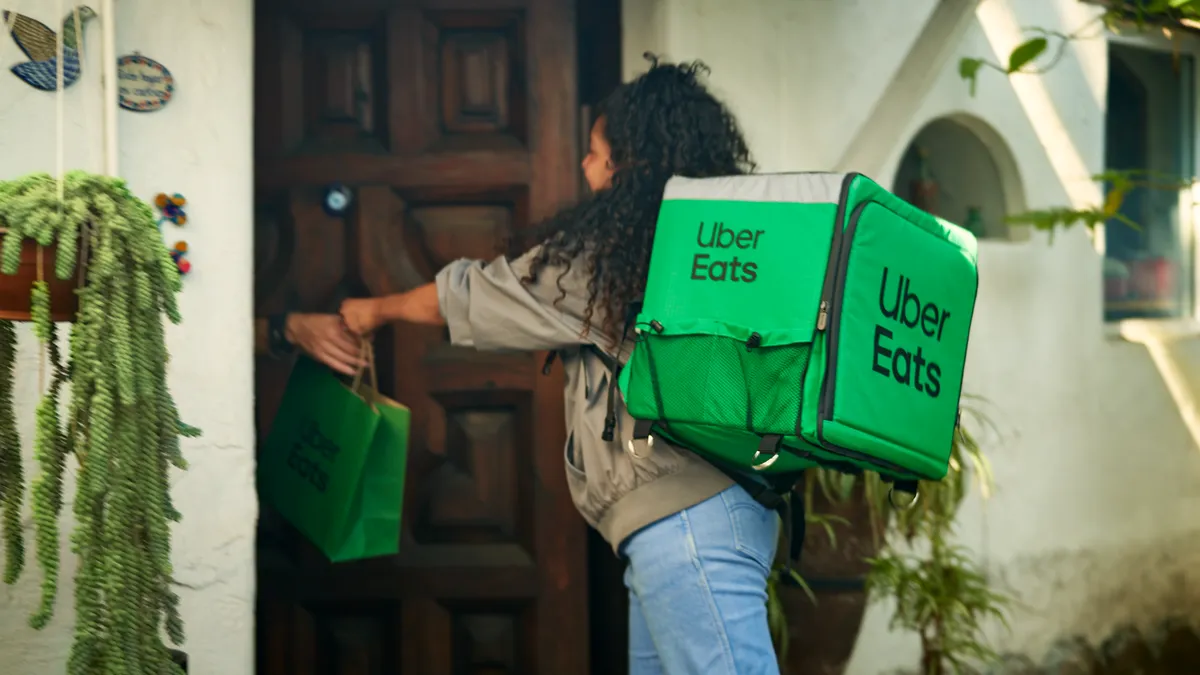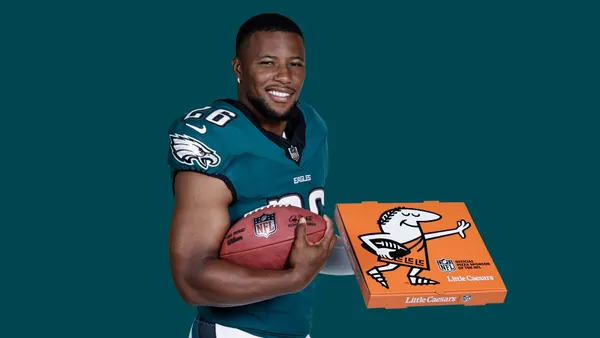Dive Brief:
- Uber Eats’ Q4 2022 business performance exceeded analyst expectations, with gross delivery bookings rising 14% year over year to $14.3 billion. Delivery revenue jumped 21% YoY to $2.9 billion for the quarter.
- Delivery made up 34% of Uber’s total revenue, and the platform’s continued investment in non-restaurant delivery categories, including grocery, convenience and alcohol, could help the business grow.
- About 40% of Uber Eats bookings in the U.S. come from the platform’s Uber One subscription offering, which bundles its Uber Eats and Rides services and offers $0 delivery for $9.99 a month, CEO Dara Khosrowshahi told investors.
Dive Insight:
Uber One’s value proposition appears to be partly responsible for the growth of Uber Eats despite inflation’s squeeze on consumer discretionary spending, Khosrowshahi said. The subscription program’s member count nearly doubled in 2022 to roughly 12 million members and has helped increase Uber Eats user loyalty, spend and frequency.
“Delivery remains resilient,” he said. “We are quite actively continuing to innovate in terms of the benefits that we offer [through Uber One] ... and it's a moat we will continue to actively develop.”
Uber One members spend roughly four times the amount of nonmembers on a monthly basis, and retention among members is 15% higher than nonmembers, he said. When Uber first acquires a new Uber One member, that subscriber is loss-making because Uber’s discounts exceed the value of their frequency, but “over the lifetime of the member, the membership creates a significant moat and a significant growth opportunity,” he said.
Uber cross-promotes between its mobility and delivery services to send “free or cheaper traffic from one platform to the other in a personalized, targeted way,” Khosrowshahi added. The company will leverage artificial intelligence and machine learning to created additional upselling and cross-selling opportunities in the future.
Uber Eats’ monthly active platform consumers (MAPCs) grew 2% year-over-year for the period, along with basket size (1%) and order frequency (4%), according to Uber’s earnings release. Active merchants grew 8% YoY to exceed 890,000 in Q4. Globally, active couriers grew 5% YoY, and grew 10% YoY in the U.S.
“We're the only player out there that has membership ... with mobility and delivery benefits,” Khosrowshahi said. The platform is helping Uber Eats outperform the delivery category, he added.
The strong Uber One performance metrics come a few months after Uber ended its free Uber Rewards program, which awarded points to users for using the Uber and Uber Eats apps. Rewards members were granted free access to a month of Uber One, which launched in November 2021.
The success of the bundled subscription model could attract more restaurants to Uber Eats’ platform. Even though other delivery aggregators offer subscription services — like DoorDash’s DashPass offering and Grubhub’s Grubhub+ membership — the unique draw of Uber’s bundled rides and delivery services could attract a broader swath of consumers and help restaurants grow their audiences.
Khosrowshahi said that Uber Eats still has a long sales runway when it comes to restaurant partner advertising opportunities, as well.
“If you look at the merchant penetration, the percentage of merchants on our delivery side who are advertising, only 25% of our merchants are active in the auctions that we have going on,” he said. “We think there's substantial upside to our advertising business. We committed to $1 billion in revenue by 2024, and we are progressing very, very well against that target.”













